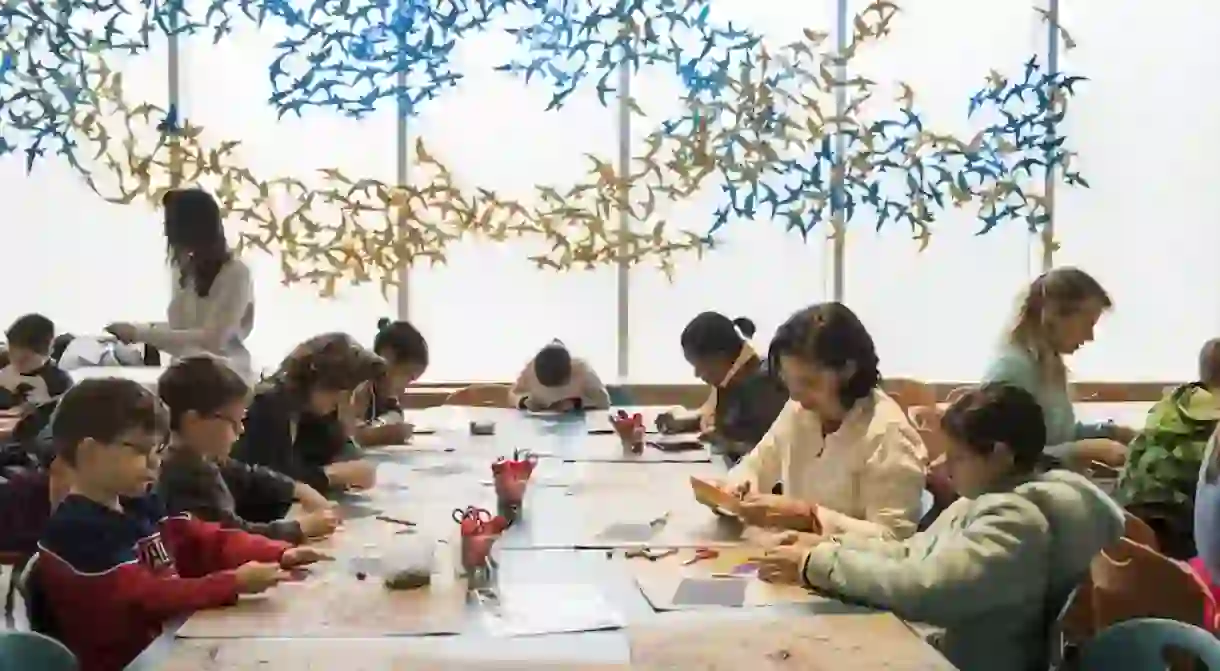The World’s Only Resident Museum Therapist On Promoting Wellbeing Through Art

Within one of Canada’s largest cultural institutions, a team of counselors is working towards fostering a safe and inclusive community space in which art is a catalyst for wellness and healing.
Canadian art therapist Stephen Legari helms one of the world’s most progressive museum ventures. Using art’s cathartic properties, Legari treats anxiety and depression, which he calls “our most prevalent mental health problems,” as well as trauma, eating disorders, people with autism and cancer patients – all within a revolutionary complex at the Montreal Museum of Fine Arts (MMFA).

In November 2016, MMFA opened the Michel de la Chenelière International Atelier for Education and Art Therapy to addresses humanist, social and cultural issues including but not limited to school dropout rates, discrimination, poverty, illiteracy, homophobia and homelessness. There, some 300,000 Montrealers currently partake in educational and therapeutic programs per year. Legari began his work at the museum mapping the progress of a group in treatment for eating disorders, and he is now the first and only known art therapist to assume a full-time residency within a museum setting.
“For me, art therapy is the use of art to explore and field the [psychological] problems that people are experiencing,” Legari says. He leads groups through MMFA’s expansive collection in pursuit of artworks adhering to a common theme and oversees the creation of their own artworks to encourage non-verbal expression. Legari’s precise method of treatment, however, is entirely dependent upon the needs of each group.
“When I’m working with folks with eating disorders – and appreciating that that’s not the only thing they’re dealing with (a history of trauma, anxiety and/or depression as well) – maybe I’m going to work with collage,” Legari explains. “Collages provide control and immediacy and they don’t require experience to manipulate them. My goal for [these patients] is to have some measure of containment through the experience while still being able to express themselves.”
For patients struggling with communication, Legari may prescribe a painting exercise. “Fluid materials get to us emotionally because they’re harder to control. And sometimes that’s what we want. If someone is having a difficult time expressing themselves or they’re disconnected from their emotions, I might gently ease them toward painting as a prescription or objective so that they can have a safe experience letting go.”

Upon completing a visual art assignment, Legari asks his patients to observe and reflect upon their own artworks in search of meaning. “If our visit [to the museum] has been around the theme of ‘resilience,’ for example, I’ll ask, ‘What did we look at in terms of resilience in the galleries? What does resilience mean to you? What are the materials that make sense to you to represent your image of resilience?’ We’re working on a cognitive level – looking at what we think and trying to make associations to what we feel. When we go into the studio, I want people to get into the feel, and later reflect on what they think and see.”
While Legari trains and supervises art therapy students who require private time with patients in order to obtain their certification, he exclusively works with tailored groups because “the individual model is fraught with the question of privilege.” Each patient is referred to Legari by way of agencies and organizations that have partnered with the museum, and Legari subsequently creates groups based on needs and method of treatment. That way, “When follow-up care is required, they can go back to the referral source.”
MMFA’s art therapy model has proven so successful that the museum is working on building partnerships with family doctors in Montreal to administer “museum prescriptions.” Local doctors will prescribe select patients sessions with Legari and his team, who will then provide feedback on how the museum’s art therapy programs are affecting their symptoms. The initiative is part of a longer-term goal to integrate and, eventually, establish the atelier within the Canadian healthcare system. Art therapy studies among patients with epilepsy and women living with cancer are slated for autumn 2018.
For people outside of Montreal who are curious about how they can promote their own wellbeing through art, Legari has a two suggestions. “Take personal time out, maybe as a family, and take advantage of your local cultural institutions. Museums can help us slow down in a way that helps us remember how to look, how to observe, how to notice. These are microtherapeutic experiences.” Alternatively, find your nearest Art Hive. Art Hives are community-driven, drop in-style, open studio spaces that endeavor to “build solidarity across geographic distances.”

MMFA’s wellness program – which is linked to the art therapy services offered by the museum but fundamentally differs in approach – is less of a “healing journey,” as Legari describes it, but rather “enforces connectivity and positive thinking.” Legari believes that the cultivation of community and the creation/observation of art have the capacity to promote significant wellness.
“One of the unique values of working through the arts is the opportunity to express non-verbally,” Legari concludes. “Often, people have come to art therapy because they’ve experienced a limitation in progress through other forms of trying to help themselves – verbally, socially, etc. Finding and revealing expression through art is really what art therapy is about.”













